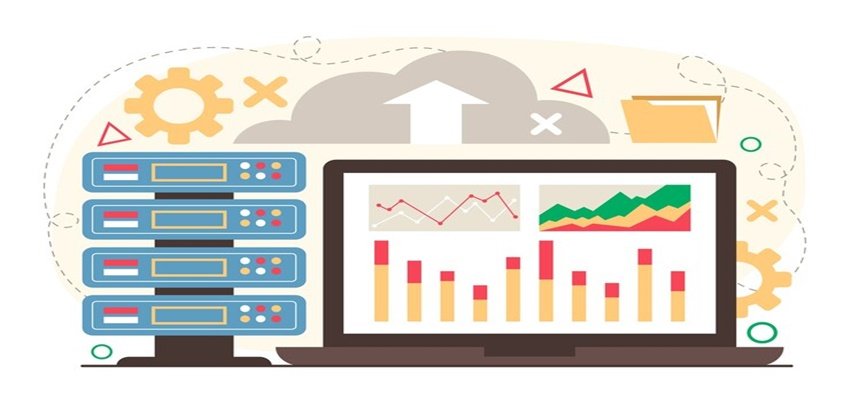
In the rapidly evolving digital landscape, organizations are increasingly confronted with a multitude of security challenges. One of the most critical components in securing an organization’s IT environment is Active Directory (AD). Serving as the backbone for user management, authentication, and access control, AD is essential for maintaining organizational security. As cyber threats become more sophisticated, transforming your security strategy with robust Active Directory monitoring is no longer just a good practice; it’s a necessity. In this article, we’ll delve into the importance of Active Directory monitoring, its benefits, best practices, and how tools like Semperis Active Directory Monitoring can help you secure your network.
What is Active Directory?
Active Directory is a directory service created by Microsoft that manages permissions and access to network resources within Windows domain networks. Think of it as a centralized database that stores information about users, groups, computers, and services in a network. AD plays a crucial role in ensuring that only authorized users have access to sensitive resources, such as files and applications.
While Active Directory simplifies user management and access control, it also presents significant security risks. If an attacker compromises AD, they can gain unauthorized access to critical information, leading to data breaches, financial losses, and damage to an organization’s reputation. Thus, implementing a robust monitoring strategy is crucial for protecting AD and, by extension, your organization’s sensitive data.
The Importance of Active Directory Monitoring
Active Directory monitoring involves the continuous observation and analysis of activities within AD. It serves several critical purposes:
1. Detecting Unauthorized Access
One of the primary reasons for implementing Active Directory monitoring is to detect unauthorized access attempts. Cybercriminals often seek to exploit vulnerabilities in AD to gain access to sensitive information. Continuous monitoring of login attempts, account changes, and unusual activities allows organizations to quickly identify and respond to potential threats.
For instance, monitoring can alert administrators if there are multiple failed login attempts from the same user account or if an unusual location is attempting to access the network. By quickly identifying these anomalies, organizations can take immediate action to protect their resources.
2. Ensuring Compliance
Many industries are subject to strict regulations regarding data protection and privacy, such as GDPR, HIPAA, and PCI-DSS. Active Directory monitoring helps organizations maintain compliance with these regulations by providing the necessary oversight and audit trails. Regularly monitoring and reporting on AD activities can demonstrate to regulators that your organization is taking security seriously, which is crucial during audits.
3. Improving Incident Response
In the event of a security incident, swift detection and response are essential. Active Directory monitoring enables faster identification of suspicious activities, allowing IT teams to respond quickly and effectively. This rapid response can significantly reduce the impact of a security breach, potentially saving your organization time, money, and reputation.
4. Enhancing User Accountability
Monitoring user activities within AD fosters a culture of accountability. When users know their actions are being tracked, they are less likely to engage in malicious or careless behavior. This heightened awareness can help create a more secure organizational culture, where everyone takes responsibility for maintaining security.
Key Components of Active Directory Monitoring
To implement an effective Active Directory monitoring strategy, consider incorporating the following components:
1. Audit Logs
Active Directory generates a wealth of data in the form of audit logs. These logs record significant events, such as user logins, changes to group memberships, and modifications to security settings. Regularly reviewing these logs can provide valuable insights into user behavior and highlight potential security risks.
Audit logs can help track patterns and anomalies that may indicate suspicious activity. For example, if a user who usually logs in during business hours suddenly logs in at midnight from a different location, this could raise a red flag.
2. Alerts and Notifications
Setting up alerts and notifications for specific activities is another essential aspect of Active Directory monitoring. Organizations can configure alerts for events such as multiple failed login attempts, changes to privileged accounts, or modifications to critical security settings.
These alerts enable IT teams to investigate incidents before they escalate into more significant threats. The faster you can detect and respond to potential threats, the better your organization can mitigate risks.
3. Reporting Tools
Regular reporting is crucial for tracking trends and identifying anomalies in AD usage. Comprehensive reporting tools can provide insights into user access patterns, helping to detect potential security issues early. Reports can also assist in compliance efforts, demonstrating to stakeholders that you are proactively monitoring and managing access to sensitive data.
4. Integration with Security Information and Event Management (SIEM) Systems
Integrating Active Directory monitoring with Security Information and Event Management (SIEM) systems can significantly enhance security visibility across the organization. SIEM tools aggregate and analyze data from various sources, providing a holistic view of your organization’s security posture.
By correlating AD logs with other security events, organizations can identify complex threats that may not be apparent when looking at AD logs in isolation. This comprehensive approach helps create a more effective security strategy.
Implementing Active Directory Monitoring
Now that we understand the importance of Active Directory monitoring, let’s explore how to implement it effectively:
1. Assess Your Current Environment
Begin by assessing your current Active Directory environment. Understand how it is structured, the permissions granted to users, and the critical assets that need protection. This assessment will help you identify the areas that require more focus in your monitoring efforts.
2. Choose the Right Tools
Selecting the right monitoring tools is crucial to your success. Look for solutions that provide comprehensive monitoring capabilities, including real-time alerts, customizable reports, and easy integration with existing systems. One such solution is Semperis Active Directory Monitoring. This tool offers robust features designed to enhance your AD security strategy, ensuring that you can effectively monitor and protect your network.
3. Define Your Monitoring Objectives
Clearly defining your monitoring objectives is vital for effective Active Directory monitoring. What specific activities do you want to monitor? This could include tracking user logins, monitoring group memberships, or observing changes to sensitive data. Having specific goals will help guide your monitoring efforts and ensure you are focusing on the most critical areas.
4. Establish a Response Plan
Developing an incident response plan is essential for addressing suspicious activities when they are detected. This plan should outline clear roles and responsibilities, communication protocols, and steps for mitigating potential threats.
A well-defined response plan ensures that your team knows how to act quickly and effectively in the face of a security incident, minimizing the damage and reducing recovery time.
5. Train Your Staff
Training your IT staff on the importance of Active Directory monitoring and how to use monitoring tools effectively is crucial. Ensure they understand the signs of potential security incidents and know how to respond appropriately. Regular training sessions can help keep your staff updated on the latest threats and monitoring practices.
Best Practices for Active Directory Monitoring
To maximize the effectiveness of your Active Directory monitoring efforts, consider these best practices:
1. Regularly Review Logs
Set aside time for regular log reviews. This should be a routine process, allowing you to spot trends and identify potential security threats before they escalate into major issues. Regular reviews can also help ensure that you are meeting compliance requirements.
2. Implement Least Privilege Access
Adopt a least privilege access model by granting users only the permissions they need to perform their job functions. Regularly review and adjust these permissions as roles and responsibilities change. This approach minimizes the risk of unauthorized access and reduces the potential attack surface.
3. Enable Multi-Factor Authentication (MFA)
Adding an extra layer of security through multi-factor authentication (MFA) can significantly reduce the risk of unauthorized access. Even if a user’s credentials are compromised, the second factor of authentication can help protect sensitive data. Implementing MFA should be a priority in any security strategy.
4. Maintain an Up-to-Date Inventory
Keeping an up-to-date inventory of all accounts, permissions, and resources within your Active Directory is essential for effective monitoring. Regularly review this inventory to identify inactive accounts and unnecessary permissions that may pose security risks.
5. Stay Informed About Threats
Stay informed about the latest cyber threats and vulnerabilities that may impact Active Directory. Regularly review security advisories and threat intelligence reports to ensure your monitoring efforts remain effective.
Conclusion
Transforming your security strategy with Active Directory monitoring is not just a recommendation; it is a necessity. As cyber threats become more sophisticated, organizations must take proactive measures to protect their sensitive information and maintain user trust. By implementing robust monitoring practices, leveraging tools like Semperis Active Directory Monitoring, and fostering a culture of security awareness, organizations can significantly enhance their security posture.
In today’s digital age, the strength of your security strategy hinges on your ability to adapt and respond to emerging threats. Investing in Active Directory monitoring is a crucial step in safeguarding your organization’s future. Don’t wait until it’s too late—take action now to ensure your Active Directory is well-protected and your organization remains secure. By doing so, you not only protect your assets but also build a solid foundation for trust with your customers and stakeholders.






